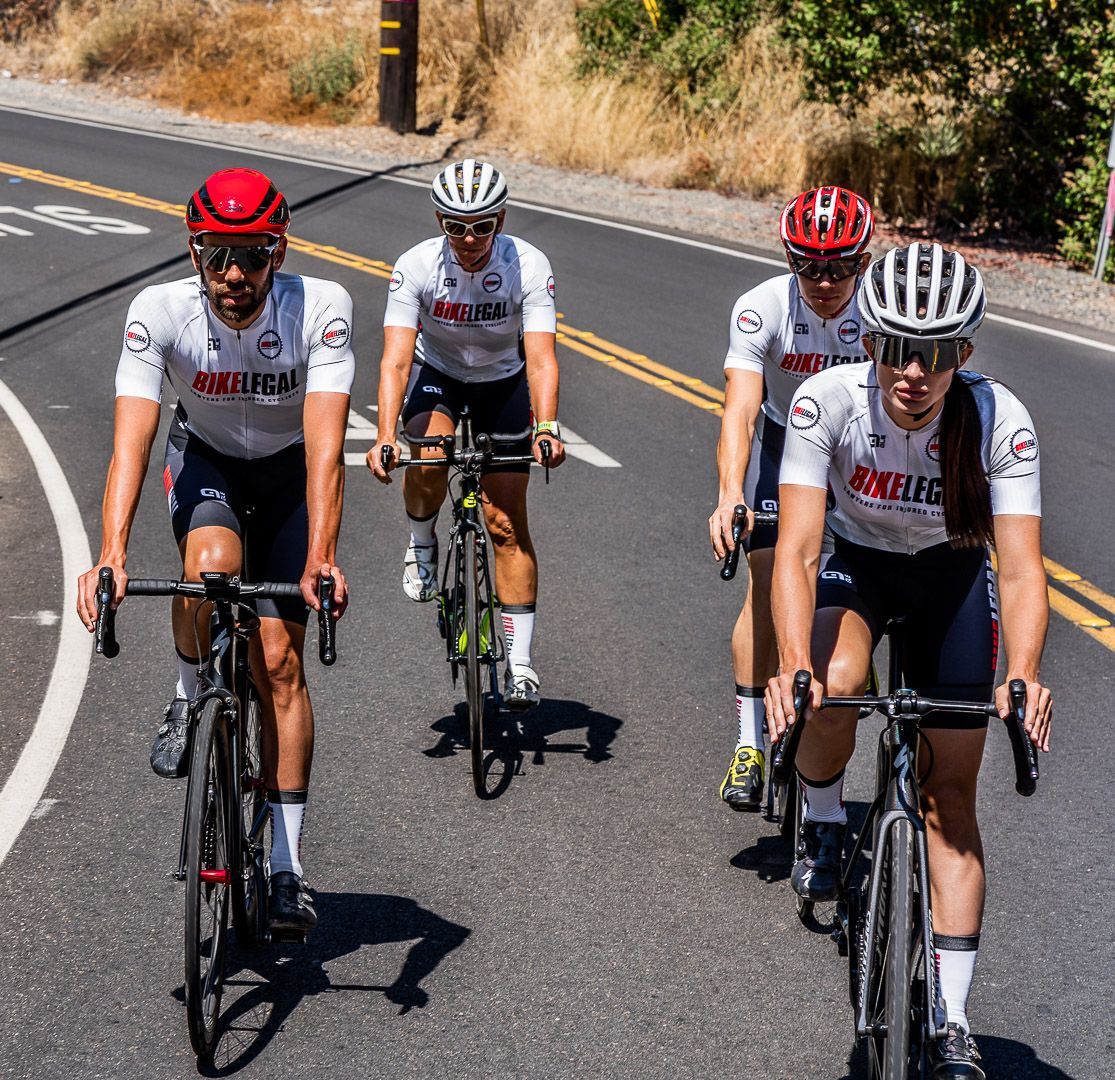Cycling with Cleats and Clipless Pedals: A Complete Guide for Beginners
Follow us on
social media!
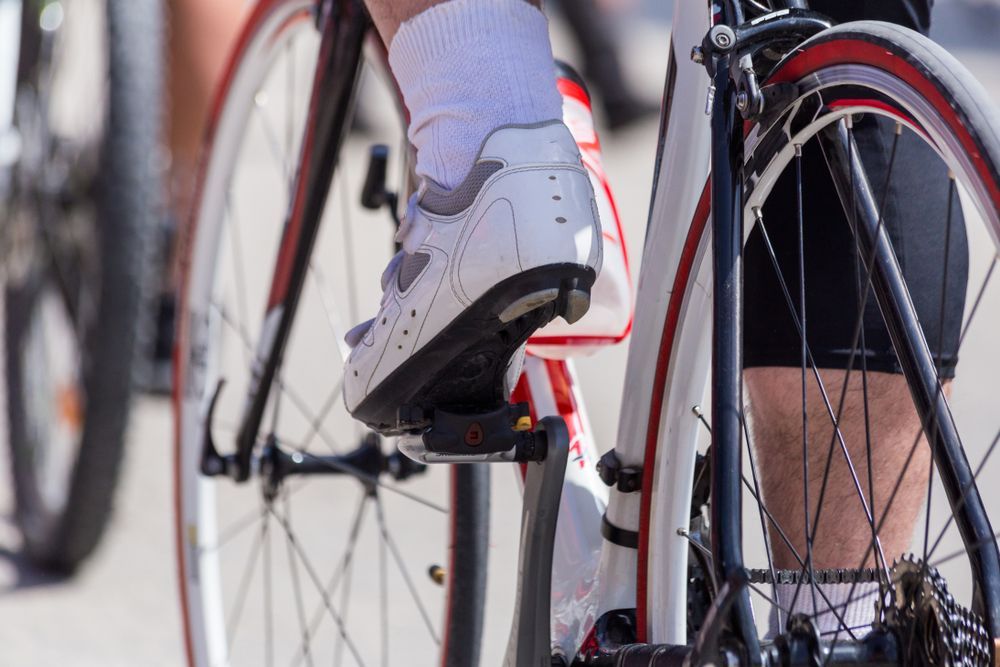
Are you ready to take your cycling game to the next level? Whether you're a seasoned rider or just starting, understanding how to use cycling cleats and clipless pedal systems can significantly enhance your cycling experience. Being "clipped in" offers a multitude of benefits for cyclists in many disciplines including road, gravel, and non-technical mountain biking. But diving into the world of cleats and clipless pedals can feel overwhelming at first. Don't worry. We've got you covered.
In this comprehensive guide, we'll walk you through everything you need to know about clipless pedal systems and cleats for cycling.
Here's what we'll cover:
- Evolution of bicycle pedal systems and why they are called "clipless"
- How bicycle cleats work and essential tips for setting them up
- The pros and cons of cycling with cleats, including the benefits you can expect
- An overview of the different types of clipless pedal systems and how to choose the right ones for your riding style
- The importance of finding the best cleat position for cycling and how to achieve it
- Step-by-step tutorials on how to clip in and out of pedals with cleats for cycling success
What Are Cycling Cleats and Clipless Pedals?
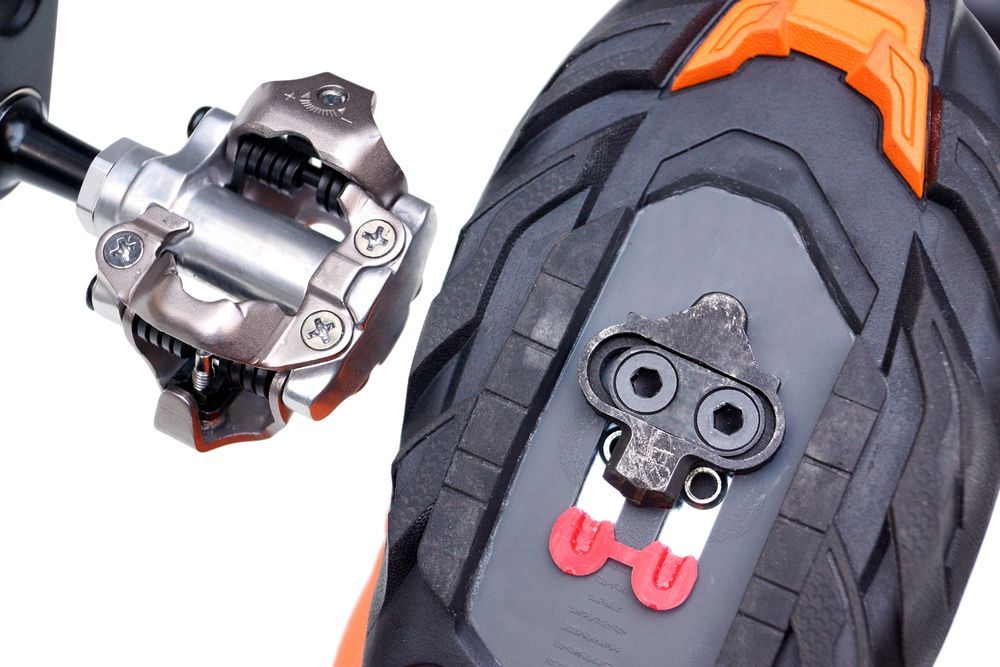
Cycling cleats are attachments installed on your cycling shoes that connect your shoes to special pedals. This connection between your feet and the bike boosts power transfer efficiency, leading to a smoother and more controlled riding experience. However, moving from flat pedals to pedals that attach your foot involves selecting the appropriate system and practicing to become proficient.
The Evolution of Clipless Pedals and Cleats
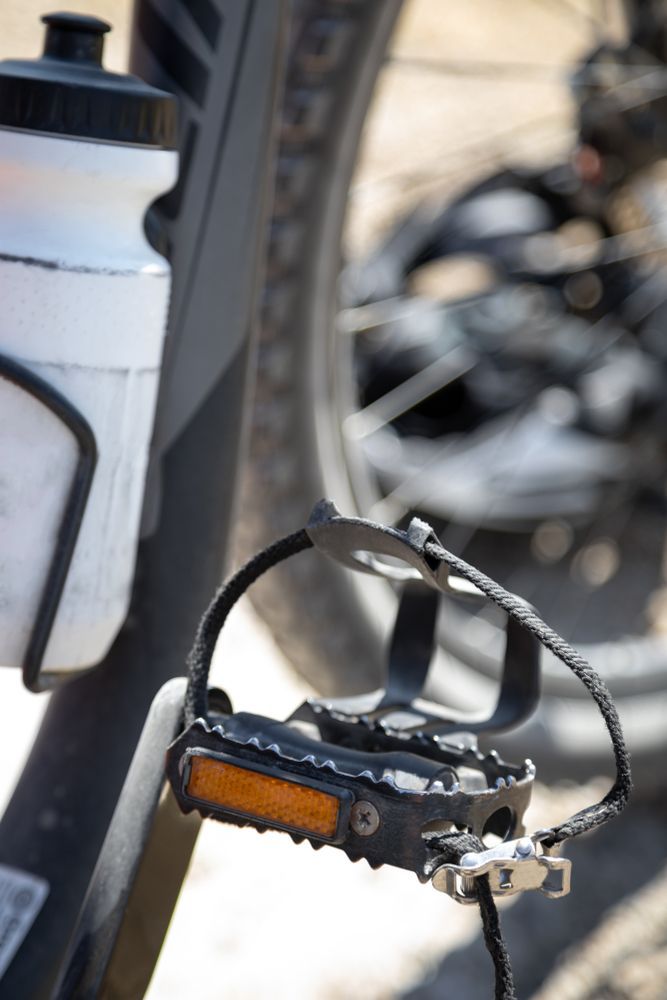
The Advent of Toe Clips In the early days of cycling, pedals were merely simple platforms where cyclists rested their feet. However, as the need for more efficient power transfer arose, toe clips were introduced in the late 19th century. These small cages, attach to the front of the pedal with a strap and encase the toes, securing the foot to the pedal and enhancing power transfer during the upward stroke of pedaling.
The modern era of cycling cleats began in 1984 when Look applied its step-in ski-binding technology to bicycle pedals. This innovation was quickly popularized by Bernard Hinault's victory in the 1985 Tour de France using these pedals. Since then, cycling with cleats, particularly in road cycling, has become the norm. Clipless pedals and cleats, lauded as one of the greatest innovations in cycling, significantly enhance pedaling efficiency and rider safety.
Transition to Clipless Pedals The term "clipless pedal" might sound contradictory since it involves the action of clipping in. The name originates from the evolution beyond the traditional toe clip pedals. Clipless pedals do away with the external toe clip cage and instead feature a mechanism that locks a cleat on the bottom of the shoe directly into the pedal. This system provides a more secure and direct connection between the shoe and pedal, which significantly improves efficiency and power transfer.
Clipless pedals became popular quickly because they offered greater safety by allowing riders to detach their feet more easily in case of a crash. They also provide a more ergonomic pedal stroke, as the cleat can be positioned to align with the natural movement of the knee, reducing the risk of injury.
How do Clipless Pedals Work?
Clipless pedal systems utilize a cleat that is attached to a cycling shoe which securely fastens to a matching pedal body. This setup is favored by many cyclists across most cycling disciplines where keeping your feet attached to the pedals is beneficial. Choosing the right cleats, pedals, and cycling shoes is essential and should be tailored to your specific riding style, discipline, and level of experience.
When you clip your cycling clipless shoes into the pedals using cleats, you create a solid connection between your feet and the bike with a spring mechanism built into the pedal. This connection ensures that every ounce of energy you exert while pedaling is efficiently transferred to the pedals, propelling you forward with greater force and efficiency.
Moreover, cycling cleats provide a stable platform for your feet, allowing you to maintain optimal foot position throughout your ride. Flat pedals lack this stability. Therefore, cleats minimize energy loss and reduce the risk of foot fatigue, enabling you to pedal more effectively for longer durations.
Pros of Cycling with Cleats
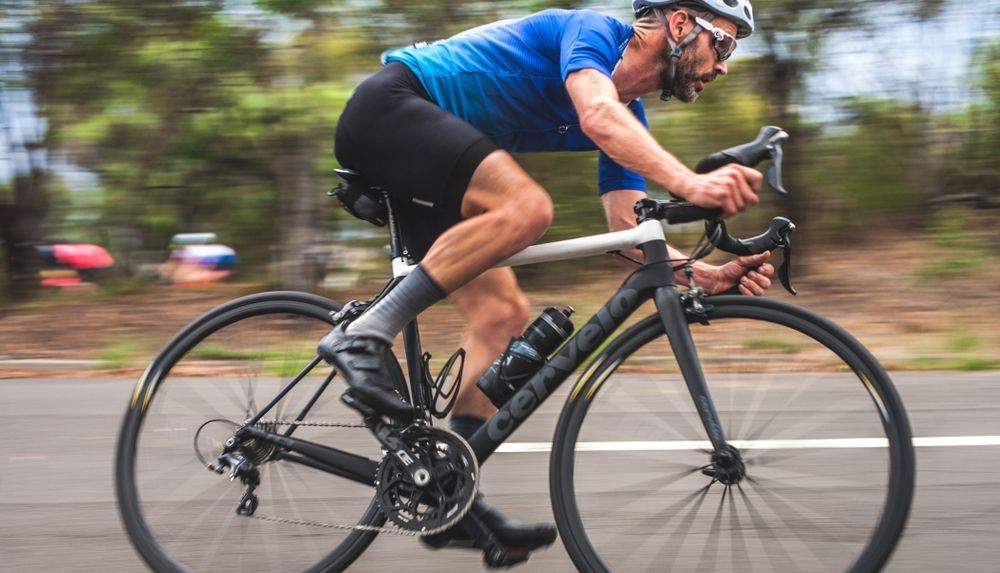
- Improved Power Transfer: By securing your feet firmly to the pedals, cleats help ensure that more of your pedaling energy is directly transferred to the bike, leading to more efficient riding and increased speed.
- Enhanced Pedaling Efficiency: Clipless pedals allow for a more consistent and controlled pedal stroke. They enable the cyclist to pull up as well as push down, which can increase efficiency, particularly on climbs and sprints.
- Better Bike Control: Having a fixed connection to the pedals improves overall stability on the bike, giving riders better control during high-speed descents, sharp turns, and technical maneuvers.
- Increased Riding Comfort: Properly adjusted cleats can help maintain optimal foot position, which reduces the chance of developing hot spots or numbness during long rides.
- Optimized Pedal Stroke: By allowing the use of muscles on the upstroke as well as the downstroke, clipless pedals can lead to a more rounded and efficient pedal stroke, which can help reduce fatigue.
- Customizable Fit: Many clipless pedal systems offer adjustable float, tension, and cleat positioning, which can be tailored to the rider's preferences and biomechanics, reducing the risk of injuries.
Cons of Cycling with Cleats
- Learning Curve: One of the significant challenges for new users is mastering the technique of clipping in and out quickly and safely. This can be intimidating and may lead to falls or accidents, especially for beginners.
- Reduced Mobility: Being physically attached to the pedal means it's harder to quickly remove your feet in emergencies, which could increase the risk of injury in a crash.
- Walking Difficulty: Shoes designed for clipless pedals often have cleats that protrude from the sole, making them uncomfortable and awkward to walk in, especially on hard surfaces.
- Initial Cost: Buying Clipless pedals and compatible bike shoes can be expensive. The cost of purchasing both can be a significant investment compared to standard flat pedals and regular shoes.
- Maintenance: Clipless pedal systems require regular maintenance to function correctly. The cleats and pedals can wear out or get clogged with mud and debris, affecting performance and safety.
- Compatibility Issues: Not all cleats and pedals are compatible with all cycling shoes, which can limit your options or lead to additional expenses.
- You Will Fall- At Least Once: It's inevitable. Whether it happens when you are first learning, or after you feel confident in your clipping in and out capabilities. There will be that moment when the brain and the foot do not communicate in time and you find yourself on the ground.
- Pro Tip: Practice unclipping by holding onto a wall or fence. Try starting and stopping on grass rather than hard surfaces until you are comfortable.
When Clipless Pedals May Not Be the Best Choice
- Casual or Urban Cyclists: Those who use their bikes primarily for casual riding or commuting might find clipless pedals to be more of a hassle than a benefit. Frequent stops at traffic lights or crosswalks can make the need to clip in and out repeatedly cumbersome and potentially risky for less experienced riders.
- Mountain Bikers (in certain conditions): Although many mountain bikers use clipless pedals for better efficiency and climbing, there are also those who avoid being clipped in when riding in technical or muddy conditions. Choosing flat pedals allows to quickly put a foot down or disengage from the bike for better handling and also safety.
- Children or Beginners: Young or novice riders who are just learning to handle a bicycle may find clipless pedals confusing and potentially dangerous as they might struggle with the mechanics of clipping in and out. It's generally better for beginners to start with flat pedals to build basic skills and confidence.
Two Bolt vs. Three Bolt Cycling Cleats
Cycling cleats and clipless pedal systems are integral components for cyclists looking to enhance performance and riding efficiency. Essentially, these systems come in two main types: the two-bolt system and the three-bolt system. Each is designed to cater to different types of riders and cycling disciplines.
1. Two-Bolt Cycling Cleat System
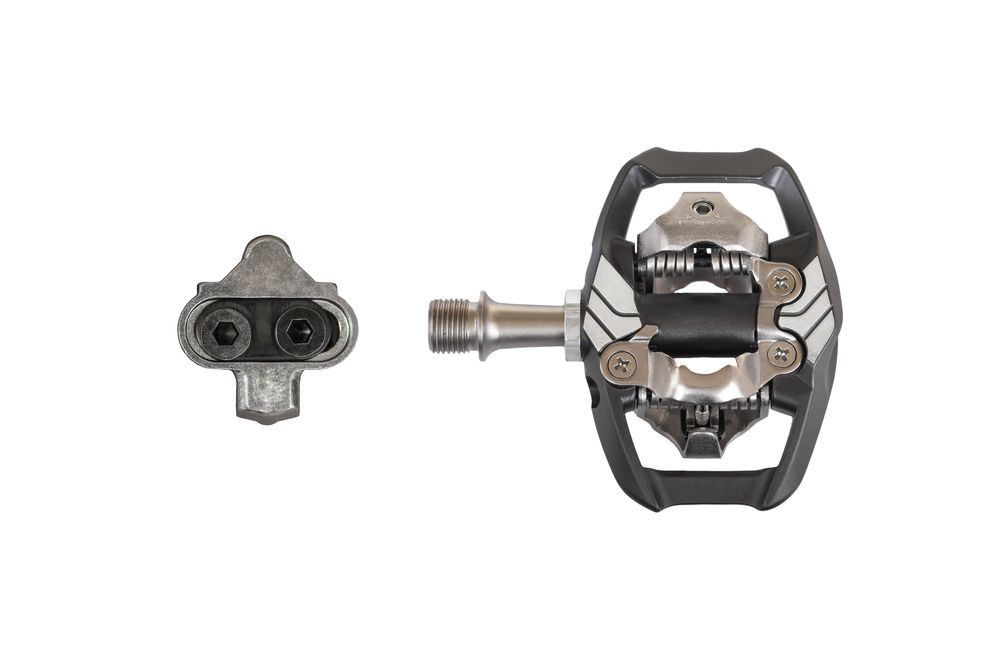
Overview The two-bolt cycling cleat system features two attachment points that secure the cleat to the shoe. This system is renowned for its durability and ease of use, making it a staple among mountain bikers, commuters, and touring cyclists. Two-bolt cleats are known for their user-friendly design and is often a great choice for those new to clipping in.
Design and Material Two-bolt cleats are typically made of metal and are commonly used with double-sided mountain bike pedals. Their small size allows cycling shoes designed for these cleats to have an outer sole with treads around the edges, further enhancing grip and stability when walking. The recessed nature of the cleat in the shoe's sole contributes to a more versatile and practical shoe that can handle both pedaling and walking comfortably.
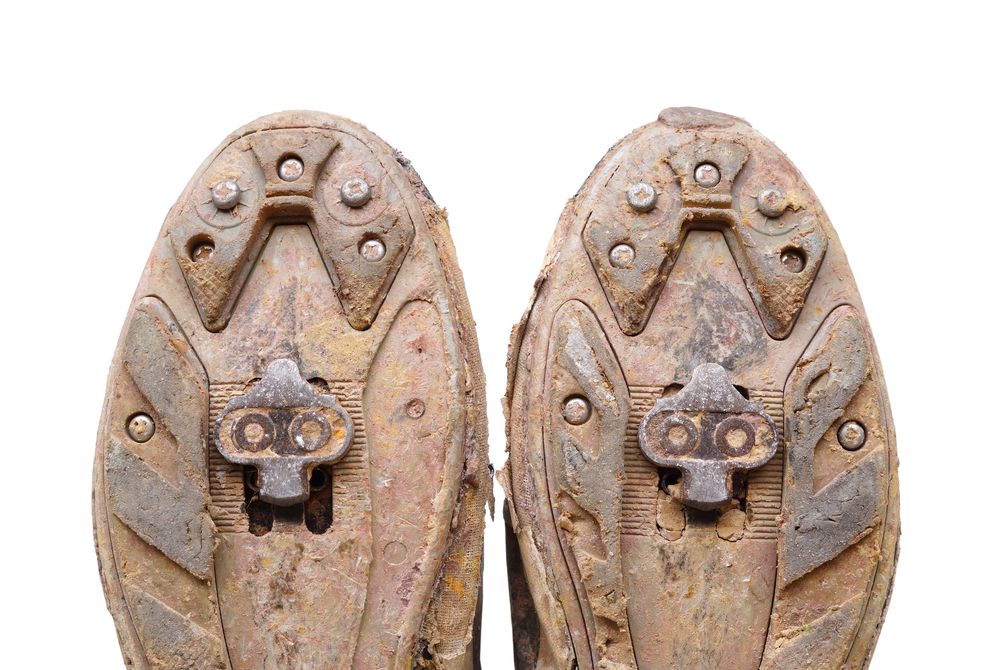
Benefits for Riders:
- Ease of Walking: Two-bolt cleats are typically recessed into the shoe's sole, allowing for easier walking, a valuable feature for activities like mountain biking and commuting where dismounting and walking are frequent.
- Mud Shedding: The design facilitates easy mud shedding, preventing debris from blocking the cleat and pedal mechanism, which is especially useful in off-road conditions.
- Simplified Clipping: These cleats are used with double-sided pedals, making clipping into and out of the pedals easier than other designs. Riders don't need to adjust the pedal orientation, simplifying the engagement and release process.
- Versatility: The small size of the cleat and its integration into the shoe’s sole design enable a versatile shoe that can effectively handle both pedaling and walking, enhancing grip and stability when off the bike.
Main Manufacturers and Systems
- Shimano SPD Pedals (Shimano Pedaling Dynamics): Predominantly used for mountain biking, gravel riding, and commuting, Shimano pedals are known for their reliability and ease of clipping in and out.
- Crankbrothers: Crankbrothers cleats are known for their innovative design, lightweight construction, and off-road performance capabilities. Offering models like the Candy and Eggbeater, Crankbrothers' pedals are distinguished by their minimalist design and excellent mud clearance.
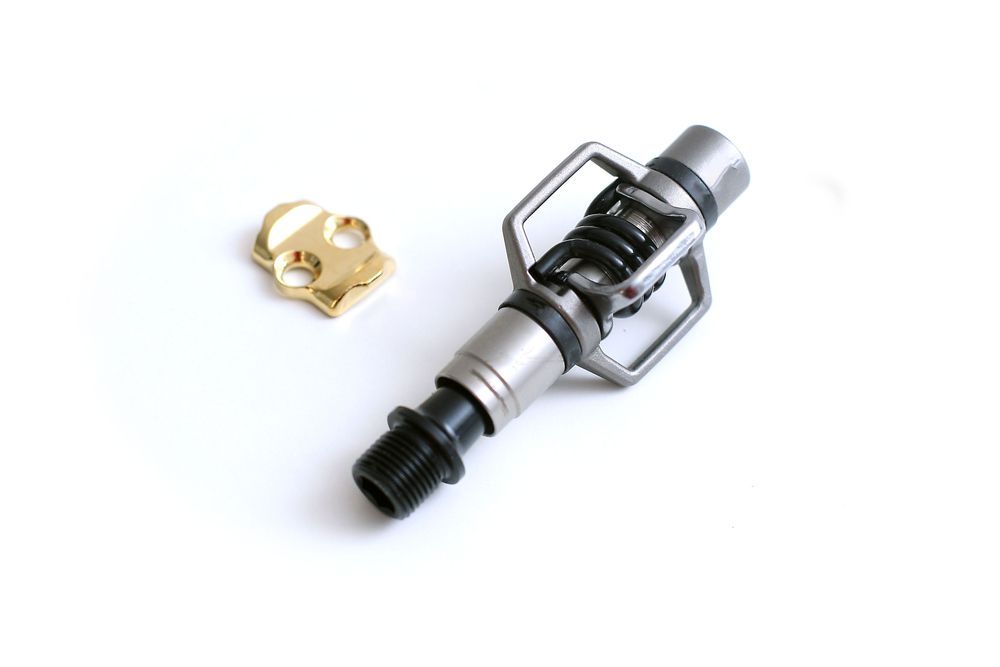
- Time ATAC: These pedals are appreciated for their ease of engagement and resistance to clogging, making them another favorite among mountain bikers.
2. Three-Bolt Cycling Cleat System
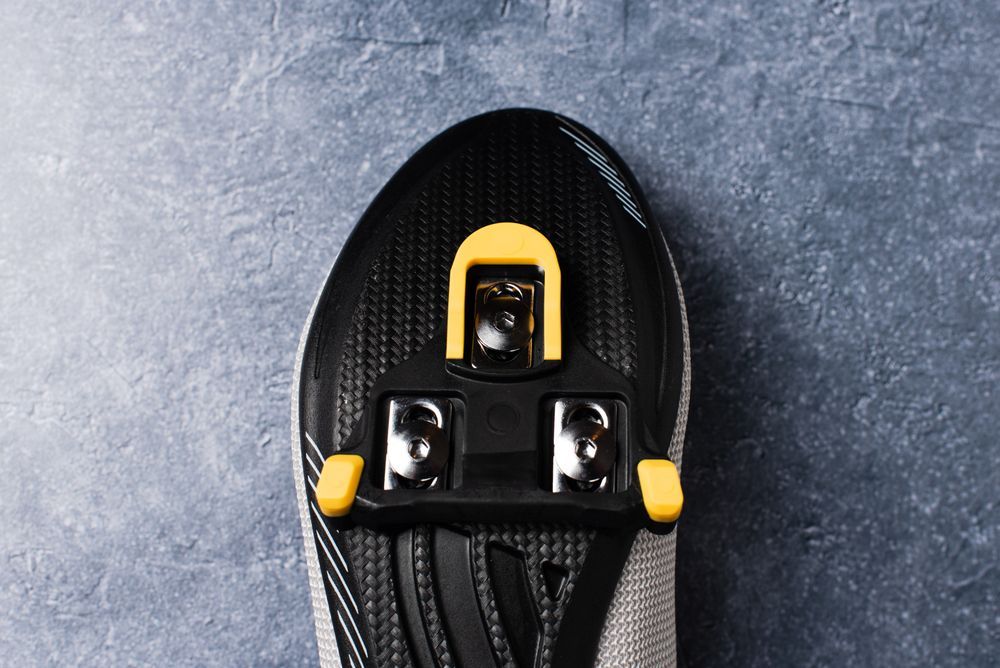
Overview: Three-bolt cleats, SPD-SL, are primarily used by road cyclists and competitive riders seeking maximum power transfer and stability. These cleats feature a three-bolt attachment system that provides a larger contact area between the toe clips the shoe and the pedal, resulting in enhanced power transmission.
Benefits for Riders
- Enhanced Power Transfer: The large surface area of three-bolt cleats provides a more substantial attachment point to the pedal, which translates to better power transfer during intense riding.
- Increased Stability: The three-bolt design of SPD-SL cleats offers superior stability and support, enabling riders to maintain precise foot positioning and control, particularly during fast descents and sharp turns.
- Specific Design for Road Cycling: Shoes designed for road cycling usually feature three bolt holes that perfectly match the cleat, ensuring a secure and precise fit.
Challenges to Consider
- Not Meant for Walking: Due to their size and the smooth sole of the shoes, three-bolt cleats make walking more challenging compared to two-bolt systems.
- Single-Sided Pedal Entry: Pedals designed for three-bolt cleats typically offer single-sided entry, which can be slightly more complex for beginners but is often quickly mastered with practice.
Additional Considerations While three-bolt systems are ideal for road cyclists focused on performance, they are less versatile for activities that require frequent walking or dismounting. Cyclists often opt for two-bolt systems on road bikes when planning longer tours or in scenarios where walking comfort is essential, like stopping at cafes during wet weather. This flexibility highlights the need to choose a cleat system based on specific cycling activities and personal comfort preferences.
Main Manufacturers and Systems
- Shimano SPD-SL: Widely recognized for its reliability and performance, offering a secure connection and efficient power transfer. Shimano offers various cleat options with different float angles and release tensions, allowing cyclists to customize their cleat setup according to their riding preferences and biomechanical needs.

- Look Keo: Popular for its lightweight design and various float options, accommodating different rider preferences and biomechanical needs.
- Wahoo Speedplay: Notable for adjustable float and dual-sided entry, enhancing pedal efficiency and customization for competitive cyclists. These cleats utilize a unique four-bolt attachment system that offers exceptional adjustability and biomechanical efficiency.
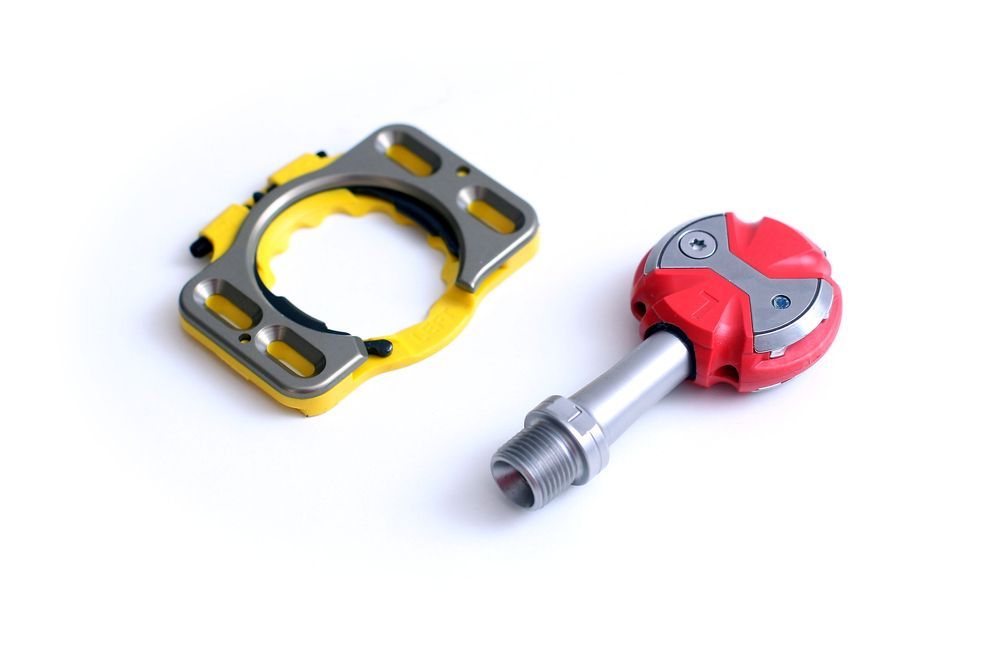
Optimizing Cycling Cleat Positioning
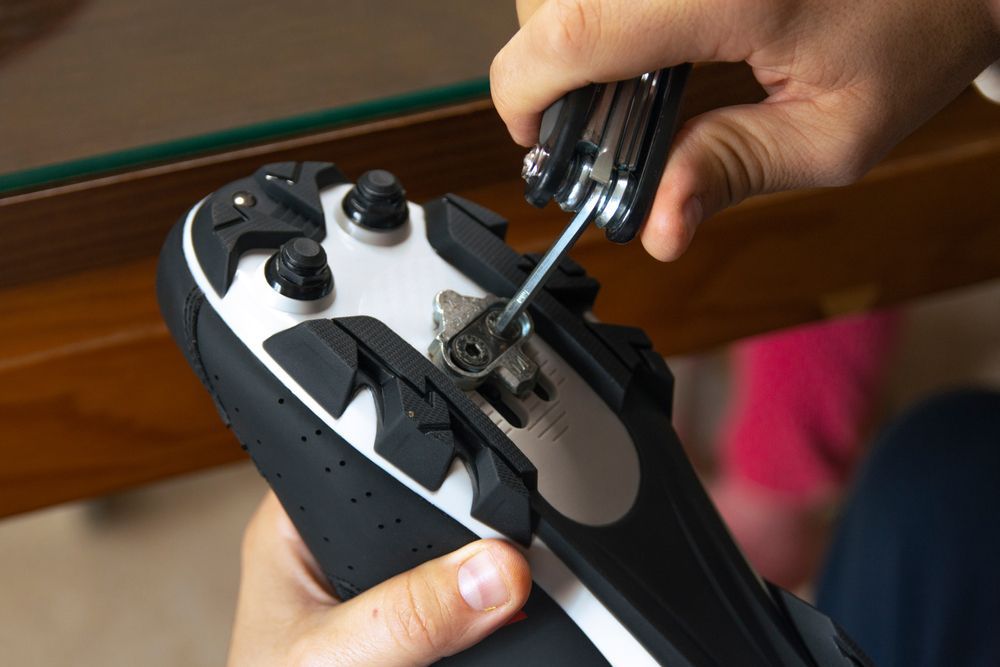
Proper cleat positioning is crucial for enhancing your cycling performance and preventing injuries. The best way to ensure your cleats are positioned optimally is to undergo a professional bike fit. A professional fitter will provide personalized recommendations for cleat and pedal systems tailored specifically to your body mechanics, riding style, and cycling goals. Most bike shops offer bike fitting services that can significantly improve your comfort and efficiency on the bike.
DIY Cleat Setup Guide
If a professional bike fit isn't an option right away, here’s a guide to help you set up your cleats on your own:
1. Start with Cleat Placement
- Begin by placing the cleat under the ball of your foot, which is generally the widest part of your foot. This is the area where most of your pressure is applied when you push down on a pedal.
2. Adjust for Comfort and Efficiency
- Adjust the cleat forward or backward to find a position that feels the most natural and comfortable. Moving the cleat towards the toe can enhance agility and quick movements while positioning it more towards the heel can increase power and endurance.
3. Lateral Positioning
- Make lateral adjustments to align the cleat so that your foot is positioned naturally on the pedal. This alignment should allow for a slight amount of toe-in or toe-out based on your natural foot stance.
4. Set the Angle
- The angle of the cleat should allow your foot to rest in a natural position when clipped in. Ensure that your knees move directly over your feet when pedaling, rather than swaying in or out, to avoid stress on your knees.
5. Test and Adjust Float
- Float allows your feet to pivot slightly while clipped in. Adjust the float settings to allow for some movement, but not so much that it feels unstable. Each rider’s float needs are different, so some experimentation may be necessary.
6. Tighten and Recheck
- Once you've found a comfortable position, tighten the cleat bolts to the recommended torque settings. It’s crucial not to over-tighten as this can damage the cleat or the shoe.
7. Test Ride
- Go for a short ride to test the cleat setup. Pay attention to how your feet, ankles, knees, and hips feel during the ride. If something feels off, adjust the cleats slightly and try again. Repeat this process until you find the best setup.
8. Regular Check-Ups
- Regularly check the position and tightness of your cleats, as they can shift slightly over time, especially after long rides or rough conditions.
Tips for Finding the Best Cycling Cleat Position
- Experiment with Positioning: Don't be afraid to experiment with different cleat positions to find what works best for you. Small adjustments can make a significant difference in comfort and efficiency.
- Listen to Your Body: Pay attention to any discomfort or pain while riding, as it may indicate that your cleat position needs adjustment. Make small changes and reassess until you find a position that feels comfortable and natural.
- Seek Professional Advice: If you're unsure about cleat positioning or experiencing persistent discomfort, consider seeking advice from a local bike shop, any professional bike fitter or cycling coach. They can provide expert guidance and assistance in finding the optimal cleat position for your unique needs.
Ride Safe with Bike Legal
You've now unlocked the secrets to mastering cycling cleats, ensuring a safer and more efficient ride every time you hit the road. Remember these key takeaways:
- Proper cleat selection is crucial for performance and safety.
- Position your cleats correctly to optimize power transfer and minimize injury risk.
- Use cleats safely and efficiently, always prioritizing your well-being on the road.
Now, are you ready to ride confidently? Let Bike Legal be your trusted ally in the cycling world. With our expertise in personal injury representation and advocacy for cyclist rights, we're here to ensure you're protected on every journey.
Through advocacy, education, and community initiatives like the Junior Cycling Grant Program, Bike Legal strives to promote cycling for everyone everywhere in all disciplines. Whether it's promoting the importance of wearing helmets or advocating for better cycling infrastructure, we are dedicated to making a positive impact on the cycling community.
Take the first step towards cycling peace of mind. Request a free consultation by calling 877-BIKE LEGAL (877 245-3534) or submitting a form today!
FAQs:
Q: How do I know if cycling cleats are right for me?
A: Cleats are beneficial if you are looking to improve your cycling efficiency, control, and power transfer. They are particularly advantageous for road cycling, competitive cycling, gravel riding, and non technical mountain biking. However, cleats may not be necessary if you primarily cycle casually or in urban settings where frequent stops require you to get on and off the bike quickly. Assess your cycling needs, goals, and the type of riding you do most often to determine if cleats are a suitable investment.
Q: What are clipless pedals?
A: Clipless pedals are a type of bike pedal system designed to secure a cyclist’s feet to the pedals using a special cleat mounted on the bottom of compatible cycling shoes. Unlike traditional flat pedals or those with toe clips and straps, clipless pedals allow for a direct attachment between the shoe and pedal through a locking mechanism.
Q: Is it better to cycle with cleats?
A: Yes, cycling with cleats offers several benefits. Cleats improve power transfer, allowing you to generate more force with each pedal stroke. They also provide better control and efficiency, especially during high-intensity rides or climbs.
Additionally, cleats help maintain proper foot positioning, reducing the risk of injury and enhancing overall comfort while cycling.
Q: How much easier is cycling with cleats?
A: Cycling with cleats can make your ride significantly easier. By securely attaching your shoes to the pedals, cleats ensure a more efficient transfer of power from your legs to the bike, resulting in smoother and more controlled pedal strokes. This enhanced efficiency can lead to improved performance, especially during long rides or challenging terrains.
Q: How much do cleats help cycling?
A: Cleats play a crucial role in enhancing cycling performance and comfort. They provide a stable connection between your shoes and the pedals, allowing for more efficient power transfer and better control over the bike.
Additionally, cleats help maintain proper foot alignment, reducing the risk of fatigue and discomfort during extended rides. Overall, cleats significantly improve the cycling experience for riders of all levels.
Q: How do you start cycling with cleats?
A: Starting cycling with cleats requires a few simple steps. First, ensure you have the right type of cleats compatible with your cycling shoes and pedals. Next, practice clipping in and out of your new flat pedals and cleats in a safe environment, such as an empty parking lot or quiet street.
Gradually increase your confidence and comfort level with cleats by taking short rides and practicing different scenarios, such as stopping and starting. Remember to adjust the cleat position on your shoes to find the optimal fit for your riding style and comfort. With practice and patience, cycling with cleats will become second nature.
At Bike Legal our mission is to advocate for bicycle safety and sharing the road responsibly through education.
Our legal team is committed to supporting and representing cyclists across the United States no matter where you ride or how you ride.
If you or someone you know has been involved in a bicycle accident, Bike Legal is here to help!
Visit: www.bikelegalfirm.com
or call 877-BIKE LEGAL (877-245-3534)


